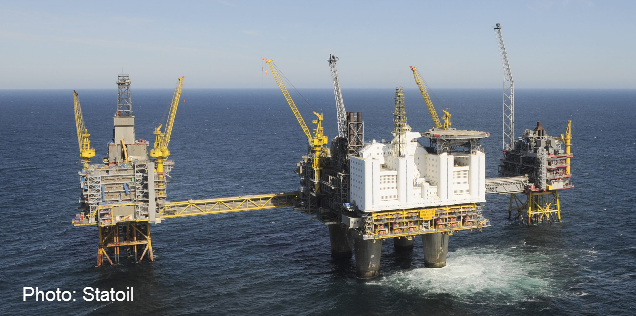The CO2 emissions from the Norwegian Petroleum Industry represent approximately 25% of the national CO2 emissions. At the same time the industry is world leader wrt low emissions per produced unit. On this site we present what we are doing as an industry and some tools on how to reduce emissions through improved energy management.
The industry is subject to and must fulfil several regulatory and administrative frameworks including CO2 tax, quotas (EU ETS), BAT (Best available technology/technique) requirements in discharge/emission permits and conditions requiring evaluation of emission reduction options in the PDO (Plan for Development and Operation). New technologies have been implemented in most of the field developments, effective area and transport solutions have been selected and the industry is leading in developing technologies and implementing solutions for low energy consumption and low emissions.
In the roadmap for the Norwegian Continental Shelf (NCS) the petroleum industry in Norway has defined the following overall climate and commercial goal for 2030:
Maintain safe and profitable production at the present level, and implement CO2 reduction measures from 2020 which correspond cumulatively to 2.5 million tonnes of CO2 equivalents per annum by 2030.
The Norwegian Oil and Gas Association initiated a common industry project on Energy Management in 2015.
The project focuses on improved GHG and Energy Management and Energy efficiency in the production of oil and gas on the Norwegian Continental shelf (NCS), development of tools, methods and Key Performance Indicators (KPIs) as well as lateral learning and experience transfer between the companies. Another focus area is strengthening and developing the cooporation with ENOVA on both Energy Management and development of technologies for reduced energy demand and emission reductions.
The industry wants to document and report measures evaluated and implemented and the results achieved so far and are available on this site, which will be updated at a regular basis in the follow up of the project.





